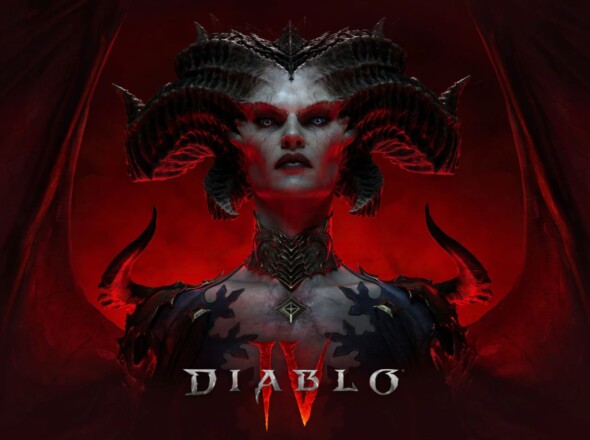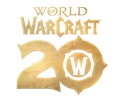A Hell of a ride: the road to Diablo IV

The beloved Diablo series is making its long-awaited return with Diablo IV. As we eagerly count down the days to 6th June 2023, when the infernal masterpiece is set to be unleashed upon the gaming world, it’s time to delve into what has gone into the creation of the upcoming series.
The Story
In Diablo IV, the story and narrative continue from the events of Diablo III, building upon the conclusion of that game. The ending of Diablo III left the world in a certain state, with two main plot lines becoming crucial for the continuation of the story. Firstly, the fate of the Prime Evils, the powerful demonic beings, needed to be addressed after the events of Diablo III. Secondly, the story focused on the young and promising Lorath the Haradrim, a key character introduced in the previous game. Additionally, the state of the world itself was a significant factor, as humanity suffered greatly from the actions of the Reapers and the ongoing demonic threat.
The impact of the Prime Evils on the world and the resulting consequences played a significant role in shaping the atmosphere and setting of Diablo IV. The state of Sanctuary and the open world aspects were influenced by the presence of these powerful entities. The world became a bleak and dangerous place, with countless religious sites destroyed, and humanity struggling to rebuild and survive amidst the chaos. Despite the overall grim situation, small pockets of hope and resilience emerged, representing beacons of light and normalcy amidst the darkness.
The Timeline
Diablo IV takes place approximately 50 years after the events of Diablo III: Reaper of Souls, allowing for an exploration of how the young and idealistic Lorath the Haradrim character has evolved over time. This character, a key representative of the Horadrim order, embodies the forbidden knowledge and guardianship central to the Diablo universe. The story delves into his experiences, thoughts, and motivations, offering insight into his growth and the challenges he faces.
The return of the Prime Evils was a matter of “when” and “how” rather than “if.” Their presence and influence were vital elements to maintain the essence of the Diablo series. Without the Prime Evils, there would be no Diablo universe. Therefore, the development team focused on exploring the implications and consequences of the Prime Evils’ return, rather than their mere existence.
Developing Diablo IV based on Diablo III’s ending was a complex process. It involved reconciling the different directions taken by the previous games and determining how to move forward. The creative decision was made to return to the darkness and atmosphere reminiscent of Diablo I and II while incorporating the best aspects of Diablo III such as visceral action-focused combat. The goal was to strike a balance that captured the essence of the earlier games while avoiding a superhero-like vibe. The opening scenes of the game, particularly in the prologue, aimed to set the tone, violence, and level of epicness desired for Diablo IV.
The Characters
Lilith, a central character in Diablo IV, as the daughter of Hatred, brings an intriguing perspective to the story. Lilith’s rebellion against the established order of things and her unwavering vision for the future make her a fascinating character to explore. Her design reflects her dual nature, embodying both evil and a forward-looking mindset.
The decision to include returning characters from previous games, alongside Lilith, was driven by the desire to connect with both new and old players. These characters have been extensively redesigned to fit the evolving narrative and world of Diablo IV. Their inclusion adds depth and familiarity while allowing for new storylines and character development.
Sanctuary, the primary setting of the Diablo series, plays a vital role in Diablo IV. The goal was to create a world that felt familiar to players while presenting new locations and explaining the changes that have occurred over the 50-year time span. The Prime and Lesser Evils, being immortal and adaptable, have embraced the new era, adding to the evolving nature of Sanctuary and the challenges it presents.
The creation of NPCs (non-player characters) in Diablo IV required careful consideration of their motivations, problems, and doubts. These factors needed to align with the main themes of the game and contribute to the dramatic tension in their respective scenes. Each character’s design played a crucial role in conveying their goals and motivations effectively. The goal was to create dynamic and compelling interactions that would engage players and make the story more dramatic and captivating.
The Narrative
The campaign in Diablo IV holds several enticing elements. The setup immediately introduces the return of key characters and raises questions about their motivations and conflicts. The core idea of Diablo, the eternal conflict between light and darkness, remains a prominent theme. As players navigate this conflict as human characters, they face the challenge of finding their way amidst the imminent clash between powerful forces. The inclusion of characters like Lorath the Haradrim and their motivations adds depth to the story and offers players a unique perspective.The narrative direction and arc of the campaign were determined through careful consideration of the overarching story and the characters involved. The team engaged in a collaborative brainstorming process, combining creative ideas while adhering to the established principles and lore of the Diablo series. The lessons learned from previous games informed the development of Diablo IV, ensuring that the core elements of the series were maintained while introducing fresh and engaging content.
In summary, Diablo IV continues the story from Diablo III, addressing the aftermath of the Prime Evils’ actions and exploring the evolving world of Sanctuary. The game’s development involved a delicate balance between returning to the dark and atmospheric roots of the series while incorporating successful elements from Diablo III. The addition of new characters, such as Lilith, along with redesigned returning characters, enriches the narrative and offers both new and old players a compelling experience. The campaign’s enticing elements lie in its immediate setup, the eternal conflict between light and darkness, and the challenges faced by human characters caught in the midst of these powerful forces. The development process relied on collaborative teamwork, thoughtful character design, and maintaining the core themes and principles of the Diablo universe.
1 Comment
Leave a Reply
You must be logged in to post a comment.





[…] month we already covered quite some content of the upcoming Diablo IV with an article about the story and one with information regarding the […]